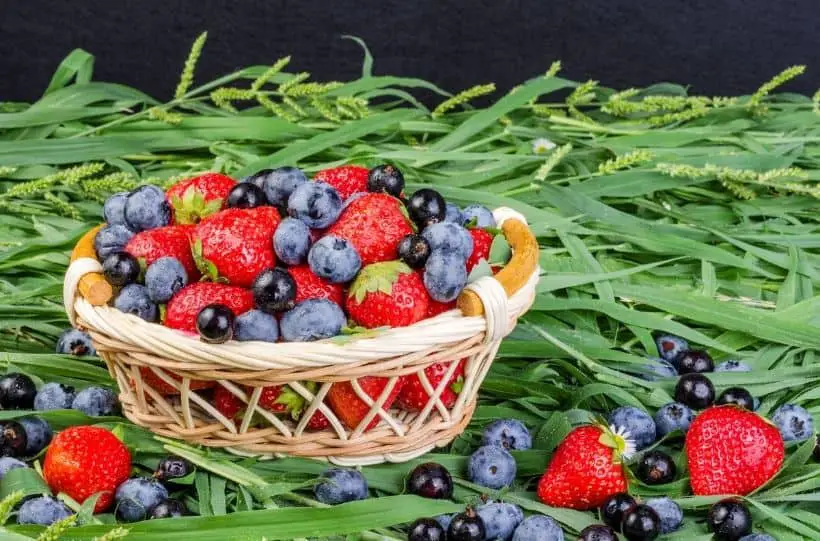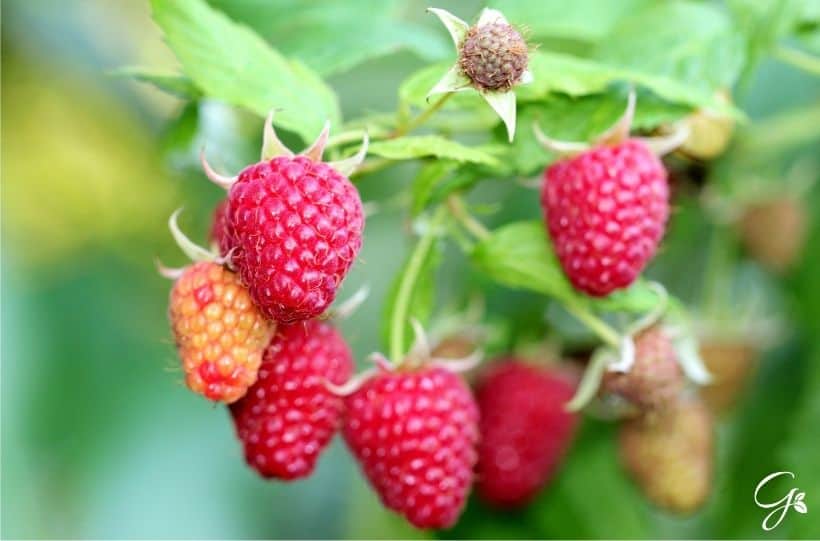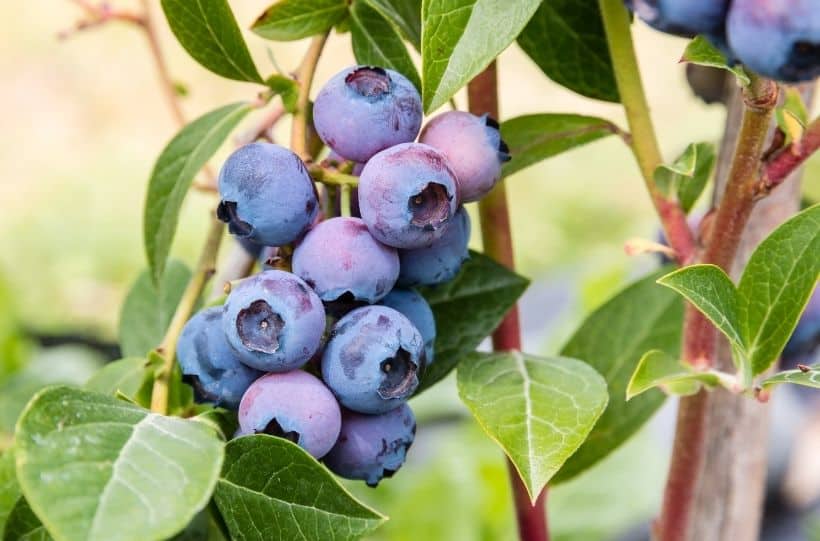6 Easy To Grow Fruit Bushes Perfect for Any Garden
Looking to save money and grow fruit from home? Take a look at these easy-to-grow fruit bushes that can be grown in any garden.

When we think of growing fruit, citrus fruits in the Mediterranean and fields of grape vines often come to mind. But they both require a hot climate for most of the year and excellent soil conditions, which most gardeners do not have the luxury of.
So does that mean growing fruit is solely limited to those based in a warmer climate?
Absolutely not. There are various fruit trees, bushes, and even potted fruit plants that can be grown all around the world.
In this post, we focus on easy-to-grow fruit bushes that you can grow with suitable space and minimal maintenance. So, if you are looking for fruit that is both delicious and easy to grow at home, make sure to continue reading for a full list below.
6 Easy-to-Grow Fruit Bushes
Strawberries
Strawberries are a classic fruit that everyone loves. They are juicy and sweet, excellent fresh, or used to make jam and tarts. Though easy to buy from the supermarket, there still isn’t anything that matches picking your very own home-grown strawberry to eat straight from the garden.
This berry is probably one of the easiest fruit bushes to grow. The soil does require a little bit of work to ensure it offers good drainage. But otherwise, strawberries can be grown in garden beds, pots, and even in hanging baskets.

For maximum benefits, plant your first set of strawberries inside in early spring. Once transferred outside, as the temperatures increase, you can split runners from the main plant and replant. Continuing to do so will provide you with all the strawberries you need for the year.
Strawberry bushes usually produce a good amount of fruit for up to four years. However, by continuing to plant new runners will ensure you never run out.
Blackberries
Blackberries are a common fruit bush found in the UK along roadsides, on the edge of fields, and even in woodland. But growing your very own blackberry bush is not only convenient but even tastier with proper care and nutrients.
As long as your soil is slightly acidic and you position your plants in full sunlight, your blackberries will thrive.
However, don’t expect your blackberries to produce fruit during their first year. Blackberries will not fruit until the second year. After which, the canes need to be cut back to soil level and covered in compost to help them rot. New canes can then be planted in their place.
Raspberries
Another firm favorite berry that tastes even better than its supermarket counterpart, raspberries are cheap to grow and can be available to harvest from June to October.
Unlike strawberries, raspberries do take a bit of extra maintenance as they grow tall and spread easily. But, as they generally fruit for a lot longer, over ten years, the time invested is worth it.
Ideally, you should consider planting two different varieties of raspberries, one being a summer-fruiting raspberry and the second as an autumn-fruiting raspberry. This way, you will have a combination of fruiting seasons, which provides you with fruit to pick for longer.

However, the varieties you choose to plant may also depend greatly on the amount of space and time you can dedicate to your raspberry bushes. Summer raspberries require staking as they grow tall. Whereas autumn raspberries tend to be shorter and have lower maintenance.
Gooseberries
Though not everyone’s cup of tea, when homegrown gooseberries are full of flavor and ideal for making jams and pies.
Gooseberry bushes are extremely easy to grow, and each plant provides a vast amount of fruit that it can produce for up to 15 years.
Like most plants, gooseberries do prefer well-drained soil but otherwise aren’t too picky on conditions. They can even grow well when in the shade, although most varieties prefer full sunlight.
Generally, gooseberries can be planted all year round, avoiding the frost. The fruit is ready for harvesting between July and August. For better-sized berries, it is best to thin out bushes at the beginning of the summer to enable more resources to go to fewer fruits.
At the end of the growing season, some time is needed to prune your gooseberry bushes to help them maintain their shape.
Goji Berries
Originally from Asia, these berries have been found growing in the wild in parts of Russia, China, Turkey, and Japan. Small red-orange oval-shaped goji berries belong to the nightshade family alongside peppers, tomatoes, and eggplant.
Due to their acclaimed medicinal properties, goji berries would make an excellent addition as an easy-to-grow fruit bush in your garden. Plus, they are great for smaller gardens as, unlike blackberries and raspberries, goji berry bushes grow to a maximum of 5 feet.
Goji berries do prefer a slightly warmer climate, but once established, will survive stronger winds and cooler weather. They are best planted between the end of summer and autumn within well-drained soil. For best harvesting results, goji berries should be planted in full sunlight.
Although they do not require much maintenance, they do need pruning each spring to encourage new growth. However, don’t expect your bush to produce any fruit in the first 2-3 years. Goji berries take time to establish and will only produce fruit on the stems that formed the previous year.
Blueberries
Blueberries are one of the easiest fruit bushes to grow and are ideal for smaller gardens. Growing a maximum of 1 meter tall, they do not take up much space and can even grow well in pots.

So long as you plant them in acidic soil and have access to full sunlight, you can plant blueberries any time of the year, bar when the ground is covered in frost.
For best results, consider planting more than one variety. Not only does this increase the length of your harvest, but also the number of blueberries available to harvest.
The great news about blueberry bushes vs. other fruit bushes is that they require no pruning in the first two years. However, once established, they require some pruning to help increase blueberry yield and keep them healthy.
Whichever fruit bush you choose from this list will be bound to taste better, produce higher quality fruit, and save you money in the long term than purchasing fruit from the supermarket.
Each fruit bush is easy to maintain, requires little additional resources, and will yield homegrown fruit for many years to come.
For more top tips on growing your own fruit at home, take a look at these posts:

